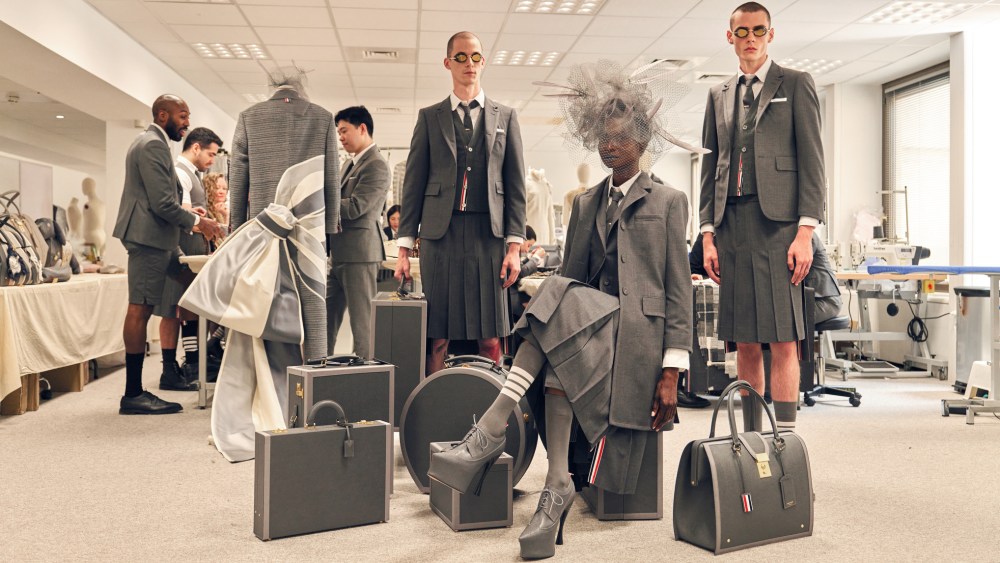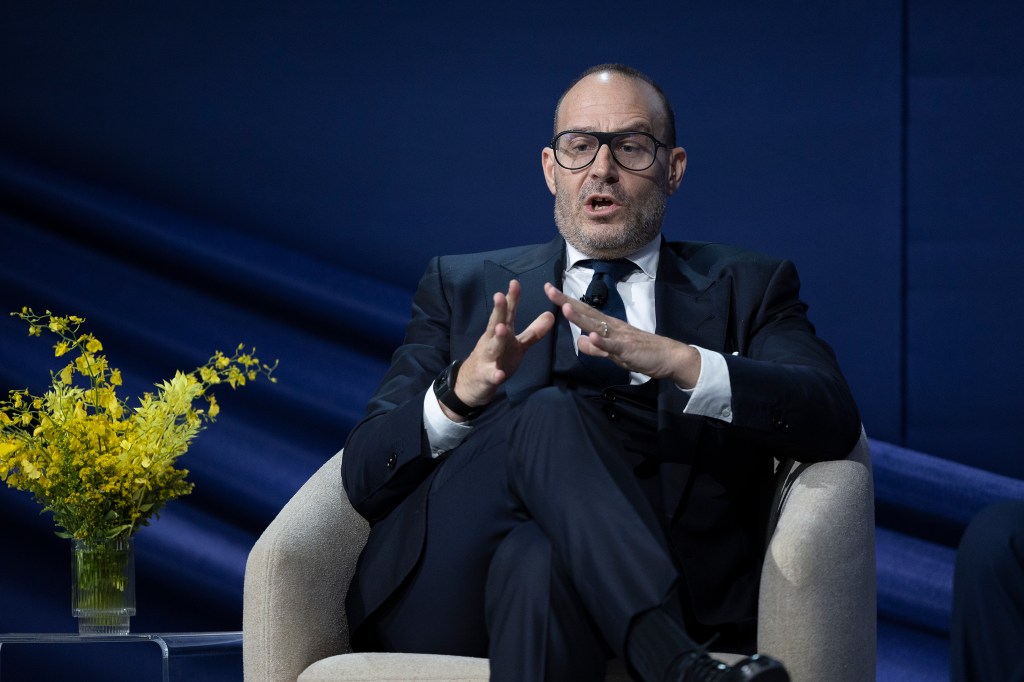LONDON — The latest round of the multinational legal dispute between Adidas and Thom Browne over striped trademarks arrived in London on Wednesday with a hearing at the High Court.
Adidas has sought to remove Thom Browne’s range of products comprising its signature four-bar motif from the U.K. market, contending it would confuse consumers.
According to court filings seen by WWD, Thom Browne argued Adidas’ ambition to protect its three-bar trademark, which has had “more than a decade of peaceful side-by-side co-existence on the market” with that of the fashion brand’s four-bar motif, goes “beyond the domain of traditional trademarks.”
“This is not a case where there can be any credible change in behavior without confusion: if a consumer knows TB’s goods to be Thom Browne, and knows Adidas to be Adidas, why would they buy TB’s clothes because of Adidas’ reputation? Why would they be any less averse to buying Adidas goods if they know nobody else is going to misattribute what they are wearing?” the Zegna-owned brand said.
You May Also Like
The New York-based label also reiterated that the four-bar motif was triggered more than 15 years ago by Adidas itself when the German activewear company asked Thom Browne to move away from his then three-bar motif. The designer has said in the past that the design was motivated by his interest in varsity sportswear following his time as a swimmer at Notre Dame University in the U.S.
“Browne duly obliged, spending the intervening period building his business into an internationally renowned design house, without complaint from Adidas,” the brand said in the filings.
Thom Browne also pointed out that despite the millions spent by Adidas on both sides of the Atlantic, no evidence of any consumer confusion or deception has come to light.
It also claimed that Adidas has sought to monopolize a more abstract generalization or conceptualization of the three-stripe motif, which is “unclear, imprecise and lays claim to a multiplicity of signs.”
The brand offered evidence in the filings, showing how a three-bar design can be commonly found in a wide range of products from brands like Palm Angels, Urban Outfitters, Gucci, Moncler, Tommy Hilfiger, White Company, JW Anderson, Karen Millen, Balmain, K-Swiss, Jack Wills, Paul Smith, Jack & Jones, Prada, Coach, Fiorelli, and others.
According to proceedings seen by WWD, Thom Browne’s lawyer Philip Roberts argued that the bar mark could take on a multitude of different forms. Roberts claimed that Adidas’ suit constitutes an attempt to obtain an unfair advantage and is an abuse of the trademark system, which would ultimately enable Adidas to achieve a “Trojan horse” registration, preventing the use of stripes on any other companies’ products.

Adidas’ lawyer Charlotte May said Thom Browne’s 2020 launch of a compression range was a tipping point that “strikes at the heart” of Adidas’ core business of operation in sportswear and technical sporting goods.
Rodrigo Bazan, chief executive officer of Thom Browne, responded to May’s accusations at the hearing that, “I think we are talking about two different planets and, with all respect to Adidas, we do not need the reputation that they are strong for us to make a business.”
Bazan revealed that in the last four years, the quantity sold from the compression range is 327. It means “there was no commercial intent or merchandising intent, or we took it to market to grow that business at all. It was just one design that he [Browne] had done, executed in the highest quality possible, that is it,” he added.
May then pointed to a collaboration with basketball star LeBron James as evidence that “Thom Browne intends to continue their encroachment into sportswear and sports marketing.” In a famous moment, the designer collaborated with the basketball icon on a suit that he and his then-teammates wore while walking through the “tunnel” to the locker room.
Roberts argued that the LeBron James example did not occur within the U.K. and claimed that it demonstrates “a worrying trend” in Adidas’ approach to the trial, which constitutes jurisdictional overreaching.

The London trial, which is expected to conclude next week, comes at a time when Adidas has suffered multiple setbacks in Europe and the U.S. in its legal actions against Browne.
At the beginning of this year, the Opposition Division of the European Union Intellectual Property Office, which is based in Spain, rejected Adidas’ efforts to block Thom Browne from registering the brand’s multistriped grosgrain ribbon in the EU.
In May, the United States Court of Appeals for the Second Circuit said it would not overturn the jury verdict reached in January 2023 that found Browne’s use of four stripes and its grosgrain ribbon did not infringe upon Adidas’s three-stripe trademark.
Shortly after, word came down that Judge Jed Rakoff, who had presided over the original lawsuit in the Southern District of New York, ruled that Adidas’ motion for a new trial was denied.
The original case saw Adidas America and Adidas AG sue Browne for using four stripes on some of the American designer’s active-inspired merchandise, saying it created confusion with the sports brand.
The athletic giant had sought $867,225 in damages — the amount that Thom Browne Inc. would have paid in licensing fees had they worked together officially. In addition, Adidas had sought $7 million in profits — the amount the company alleged that the designer earned from selling four-striped apparel and footwear.
Adidas has been using its three-stripe bar in the U.S. since the 1950s. The athletic brand spends $300 million a year advertising the stripes, and products sporting the mark account for $3.1 billion in annual sales.



